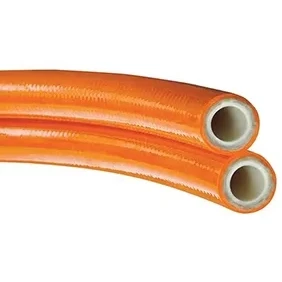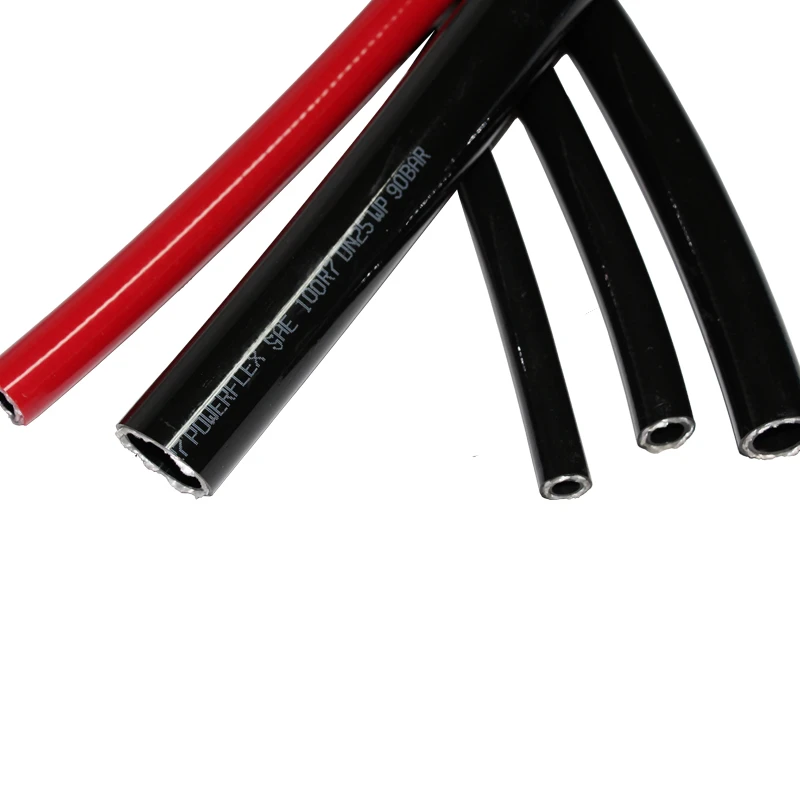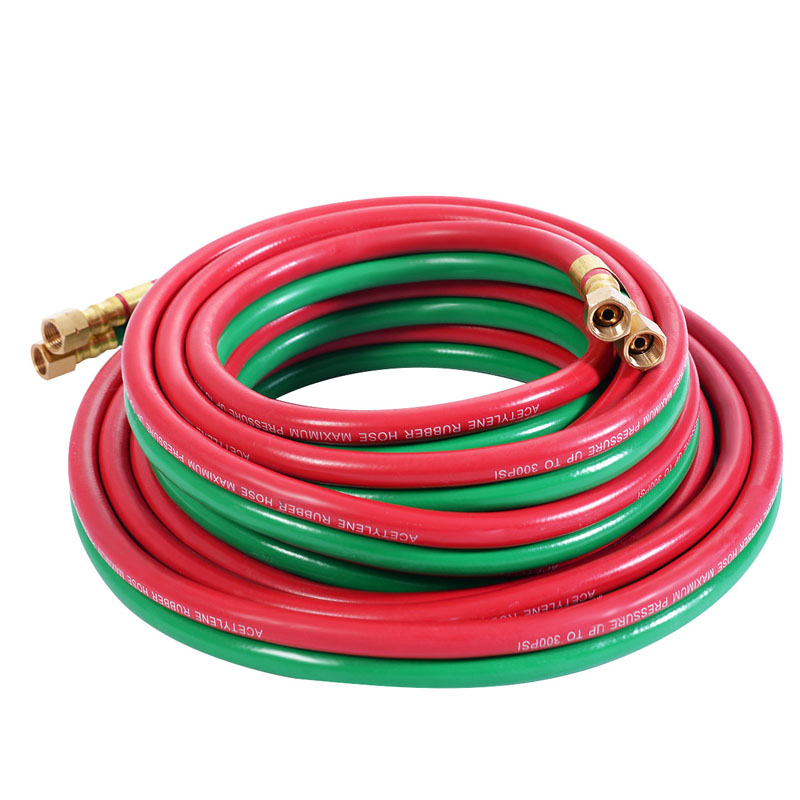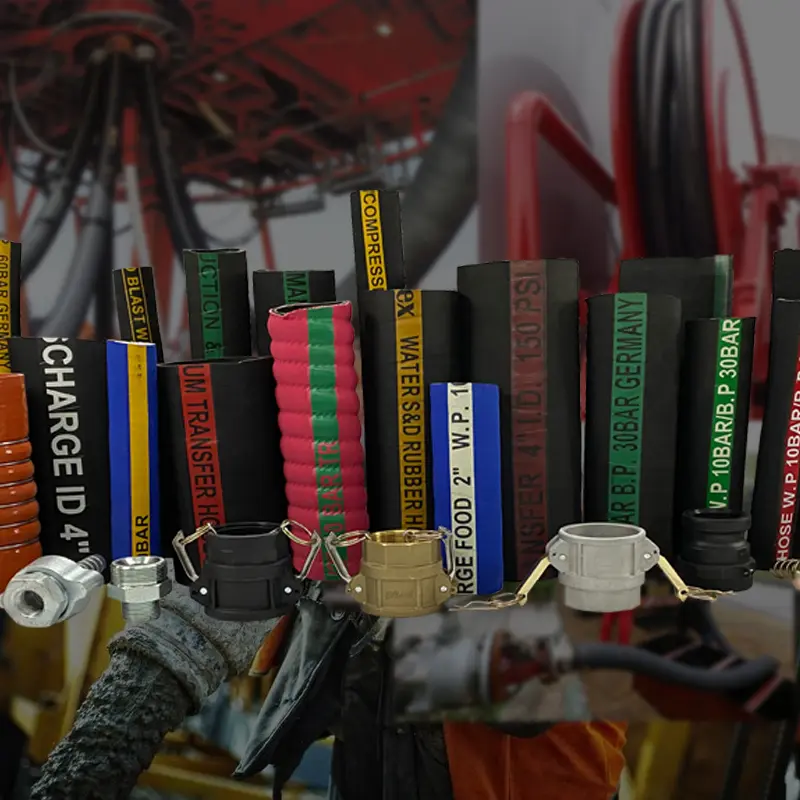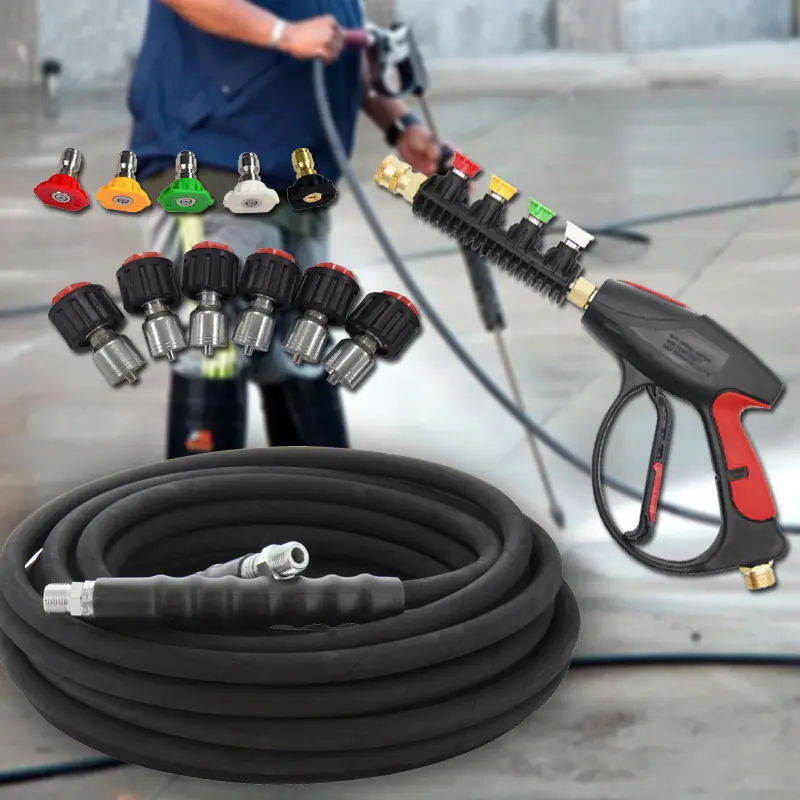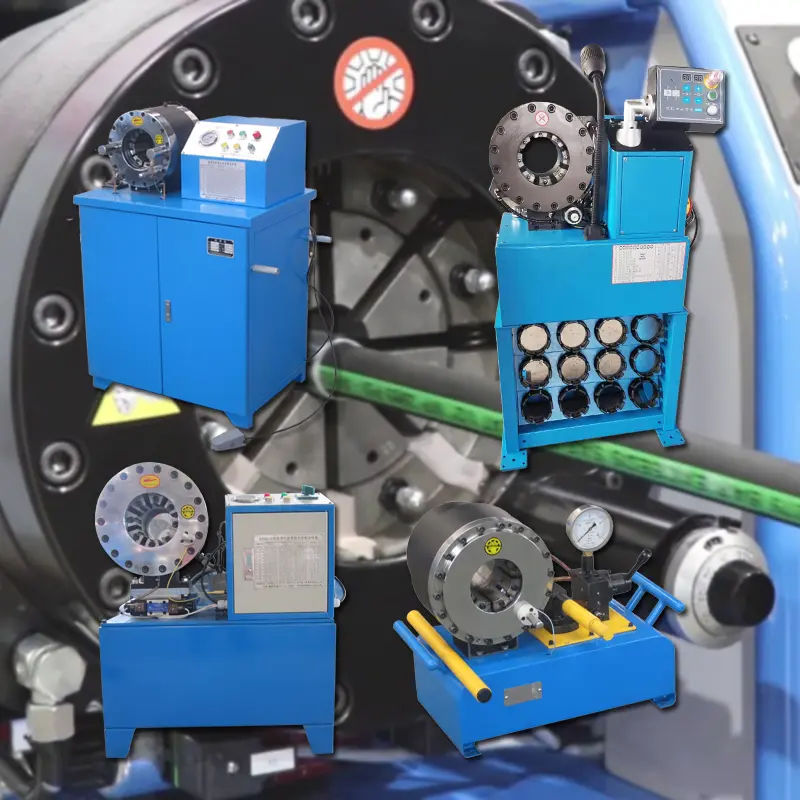Hydraulic systems operate in some of the toughest environments imaginable, where temperature extremes can quickly turn into costly downtime if the wrong hose is selected. Whether exposed to blazing summer heat on a construction site or freezing winter winds in Russia, the choice of the correct heat-resistant hydraulic hose can determine the performance and longevity of equipment. For wholesalers supplying to industries such as construction, mining, manufacturing, and logistics, understanding temperature-specific hoses is essential. Both high temperature hydraulic hose and low temperature hydraulic hose types are engineered to meet unique challenges, ensuring fluid power continues to flow safely and efficiently in extreme conditions. This article provides wholesalers with practical insights into how these hoses are designed, how to select them, and why temperature adaptability is the key to reliable hydraulic operations.
Understanding Heat-Resistant Hydraulic Hose Structure
A heat-resistant hydraulic hose is not simply a flexible tube—it is a carefully engineered product capable of resisting environmental extremes while maintaining fluid flow. These hoses are built with multiple layers, each performing a crucial role. The inner tube, typically made of oil- and heat-resistant synthetic rubber, carries hydraulic fluid under high pressure. Reinforcement layers, often constructed from braided or spiral steel wire, prevent the hose from collapsing or bursting when exposed to extreme heat or cold. Finally, the outer cover provides abrasion and weather resistance, shielding the inner layers from damage caused by sunlight, snow, chemicals, or ice.
For wholesalers, communicating the technical backbone of these hoses helps clients make better decisions. The distinction between standard hoses and temperature-rated hoses lies in their material compounds. For instance, a high temperature hydraulic hose may use specialized synthetic rubbers or thermoplastics that remain stable even when fluid temperatures exceed typical operating ranges. Similarly, a low temperature hydraulic hose
incorporates compounds that prevent stiffness and cracking when temperatures drop far below freezing.
Here is a quick comparison table that wholesalers can share with buyers:
|
Hose Type |
Temperature Range Capability |
Primary Applications |
|
Standard Hydraulic Hose |
–40°C to +100°C |
General industrial and mobile use |
|
High Temperature Hydraulic Hose |
Up to +150°C or more |
Steel mills, foundries, construction |
|
Low Temperature Hydraulic Hose |
Down to –55°C or lower |
Forestry, mining, cold storage, winter use |
When machinery must operate without compromise in extreme climates, only a heat-resistant hydraulic hose assembly will ensure consistent performance.
Widely used high-temperature hydraulic hoses
High-temperature PTFE (polytetrafluoroethylene) hydraulic hoses offer excellent heat and corrosion resistance, with a temperature range of -70°C to +260°C. The PTFE inner tube offers low friction, resists aging, and facilitates fluid transfer. The outer layer is reinforced with braided stainless steel wire and can operate in high-pressure environments.
In addition to PTFE hydraulic hoses, high-temperature versions of conventional hydraulic hoses are also available. The inner tube is typically made of a high-temperature-resistant synthetic rubber (such as NBR, HNBR, and EPDM), while the outer tube is made of an aging-resistant and high-temperature synthetic rubber. Common models include SAE 100R1AT, R2AT, R3, R4, R5, R6, R12, R13, and R15 high-temperature versions. They typically operate in temperatures of -40°C to +120°C, with some high-quality formulations capable of operating up to +150°C. They are commonly used in high-temperature environments such as steel mills, metallurgy, mining, and construction machinery.
Why High Temperature Hydraulic Hose Matters
Industries operating in high-heat environments cannot rely on ordinary hoses. A high temperature hydraulic hose is specifically engineered to withstand elevated internal fluid temperatures and external heat exposure. In applications such as steel plants, engine compartments, and asphalt operations, temperatures can easily exceed 120°C, putting immense stress on hoses. Without the right product, operators risk leaks, bursts, and equipment failure.
The materials used in high temperature hydraulic hose construction ensure that both the inner tube and outer cover maintain flexibility and durability under heat. This includes synthetic rubber compounds designed to resist oxidation, hardening, or cracking. Furthermore, special protective sleeves or heat guards can be added for equipment operating near open flames or exhaust systems.
Wholesalers should highlight the importance of upgrading to high temperature hydraulic hose for clients working in such industries. Not only does it reduce the risk of sudden breakdowns, but it also extends the service life of equipment. This means less downtime, fewer maintenance costs, and greater confidence in every operation. A hose capable of withstanding higher heat is more than just a component—it is a safeguard for the entire hydraulic system.
The Role of Low-Temperature Hydraulic Hose in Winter
Winter poses its own set of hydraulic challenges. A low temperature hydraulic hose is designed to remain flexible and crack-resistant in extreme cold, ensuring reliable operation even when temperatures plummet. Standard hoses often become stiff, brittle, or even break when exposed to freezing conditions. For industries like forestry, construction in northern climates, oil and gas in cold regions, or refrigerated warehouse operations, this can mean halted production and costly downtime.
A low temperature hydraulic hose solves this by using specialized rubber compounds that stay pliable at sub-zero temperatures. These hoses can handle sudden temperature swings without damage, making them ideal for outdoor equipment operating in snow, ice, or freezing rain. To wholesalers, offering low-temp solutions is an opportunity to provide long-term reliability for clients who cannot afford hydraulic failure in critical operations.
Here’s a simple illustration of cold-weather performance:
|
Hose Type |
Flexibility at –40°C |
Crack Resistance |
Recommended Use Case |
|
Standard Hose |
Poor |
Low |
Mild climates |
|
Low Temperature Hose |
Excellent |
High |
Winter operations, deep freeze |
For industrial buyers, investing in a low temperature hydraulic hose means preventing winter shutdowns and avoiding safety hazards caused by hose failure in freezing conditions.
Choosing The Right Hose For Temperature Extremes
Selecting between high temperature hydraulic hose and low temperature hydraulic hose depends on the working environment and application. Wholesalers play a crucial role in guiding clients toward the right decision. Key factors include fluid type, operating pressure, external environment, and expected temperature fluctuations. For example, a heat-resistant hydraulic hose installed on a mining truck in cold northern climates may require both cold flexibility and high-pressure endurance.
Another important consideration is proper maintenance and storage. Even the best hoses lose performance if exposed to the wrong conditions. Storing hoses in climate-controlled environments, avoiding direct sunlight or freezing moisture, and performing regular inspections are essential practices. Preventative measures such as adding protective sleeves or draining fluid during system downtime also extend hose life.
By offering temperature-specific hoses, wholesalers provide more than just a product—they offer peace of mind to their clients. Every heat-resistant hydraulic hose assembly supplied is a promise of reliability, safety, and efficiency across industries worldwide. For wholesalers looking to strengthen their portfolio, sourcing temperature-resistant hydraulic hoses from our website ensures unmatched quality, customization options, and professional support.
Heat-Resistant Hydraulic Hose FAQs
What makes a hydraulic hose heat-resistant?
A heat-resistant hydraulic hose is manufactured with specialized synthetic rubber compounds and reinforcement layers designed to withstand extreme heat or cold without losing flexibility or structural integrity.
Why do I need a high temperature hydraulic hose for industrial equipment?
A high temperature hydraulic hose prevents breakdowns and leaks when exposed to elevated fluid and ambient temperatures, making it essential for industries like steel, construction, and manufacturing.
How does a low temperature hydraulic hose perform in winter?
A low temperature hydraulic hose remains flexible and durable even at sub-zero conditions, preventing cracks or brittleness that would normally affect standard hoses in cold climates.
Can I store hydraulic hoses outdoors in freezing conditions?
It is not recommended. Even a low temperature hydraulic hose should be stored in a dry, climate-controlled space to avoid moisture, ice buildup, or UV exposure that can reduce service life.
How can wholesalers benefit from offering heat-resistant hydraulic hoses?
By supplying heat-resistant hydraulic hose assemblies, wholesalers meet the diverse demands of industries working in temperature extremes, ensuring reliable performance and building long-term customer trust.
Product Application











